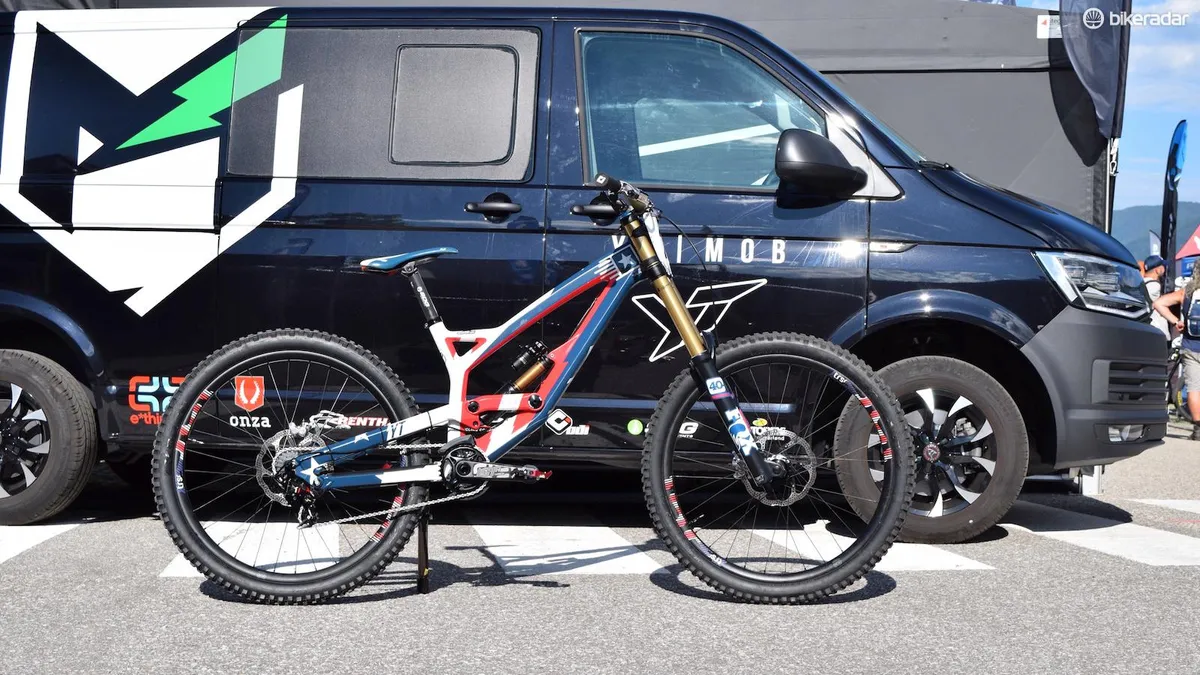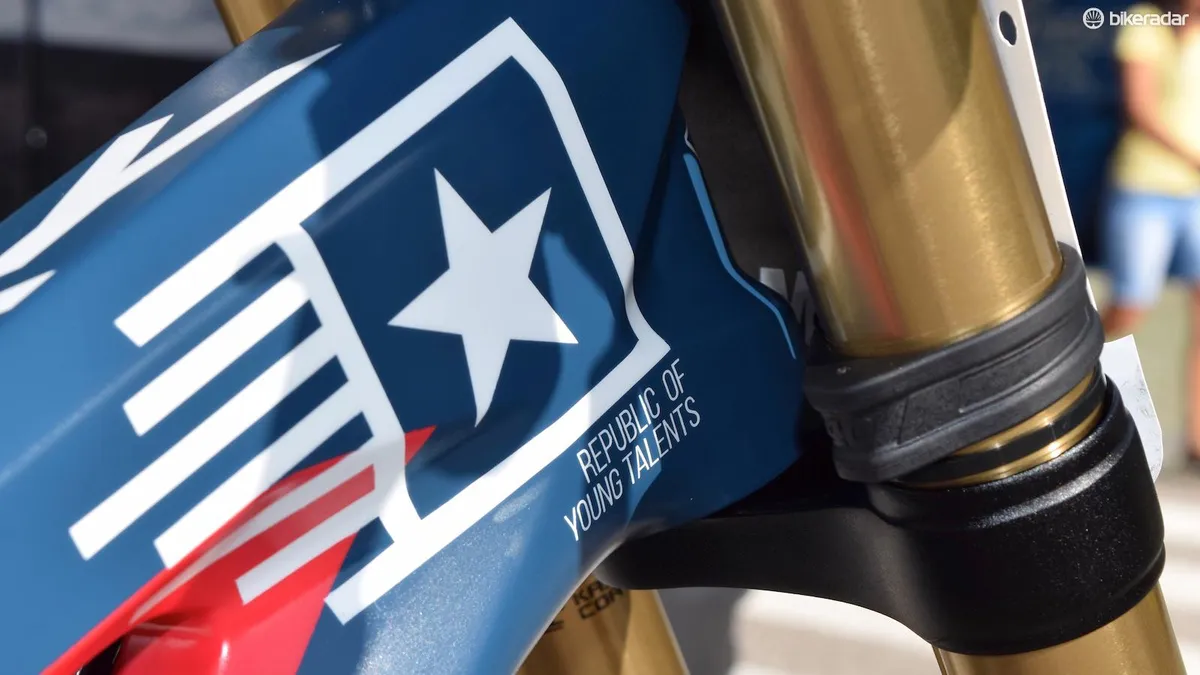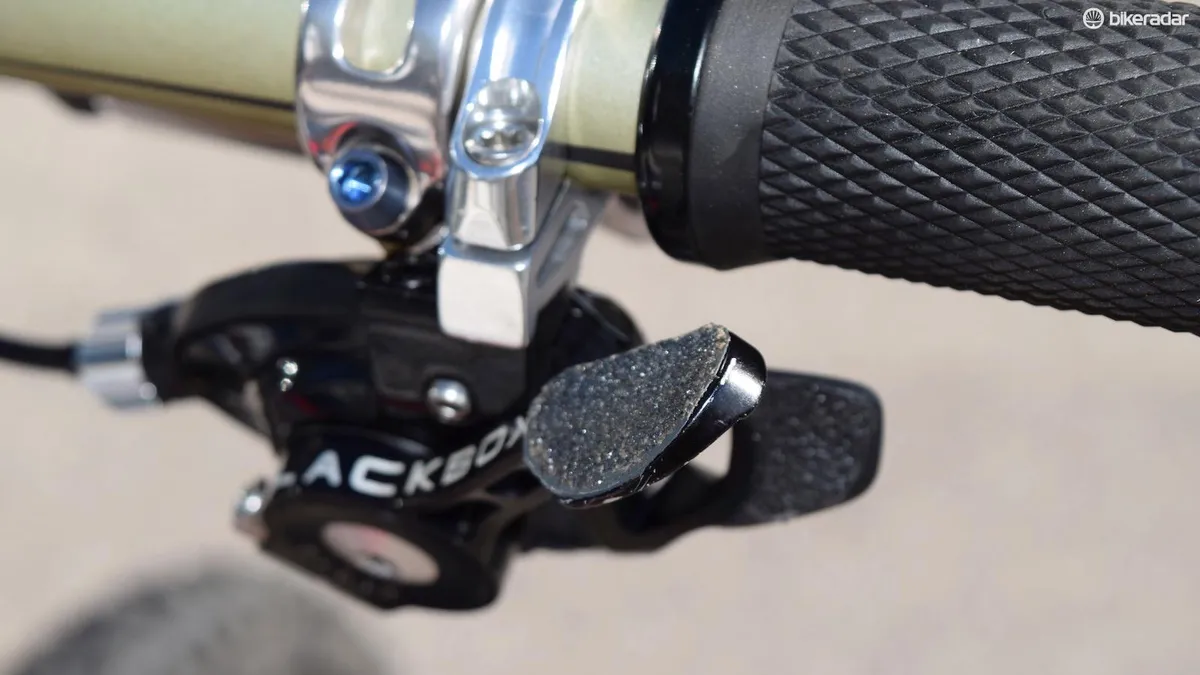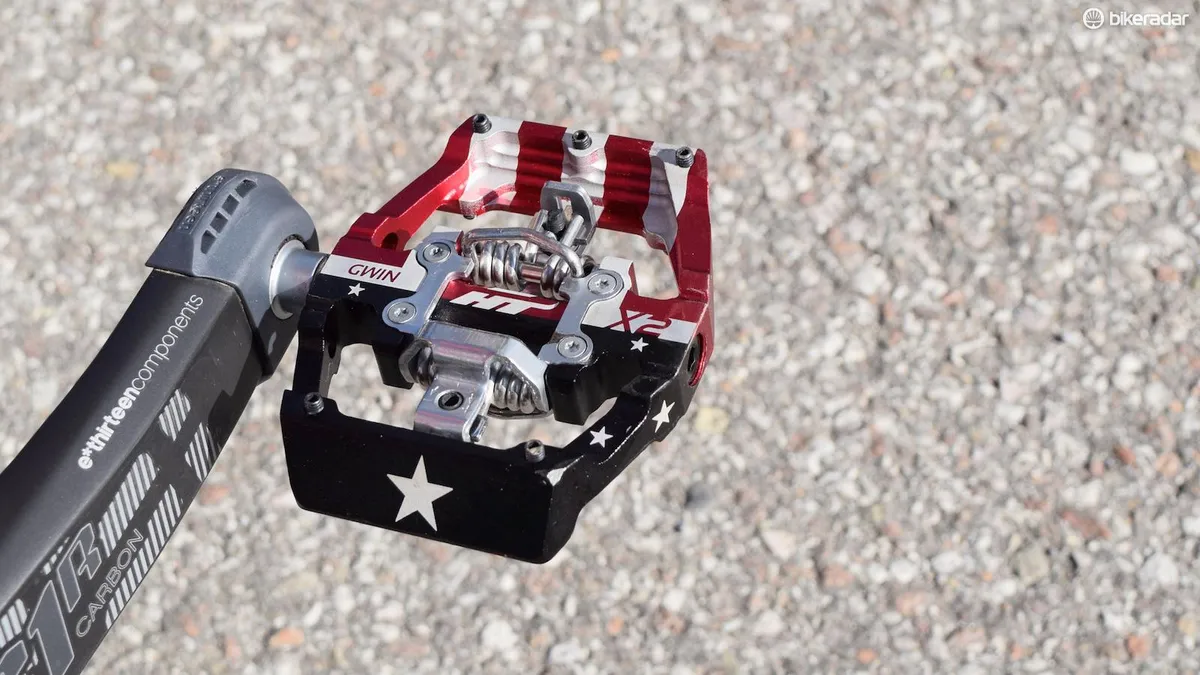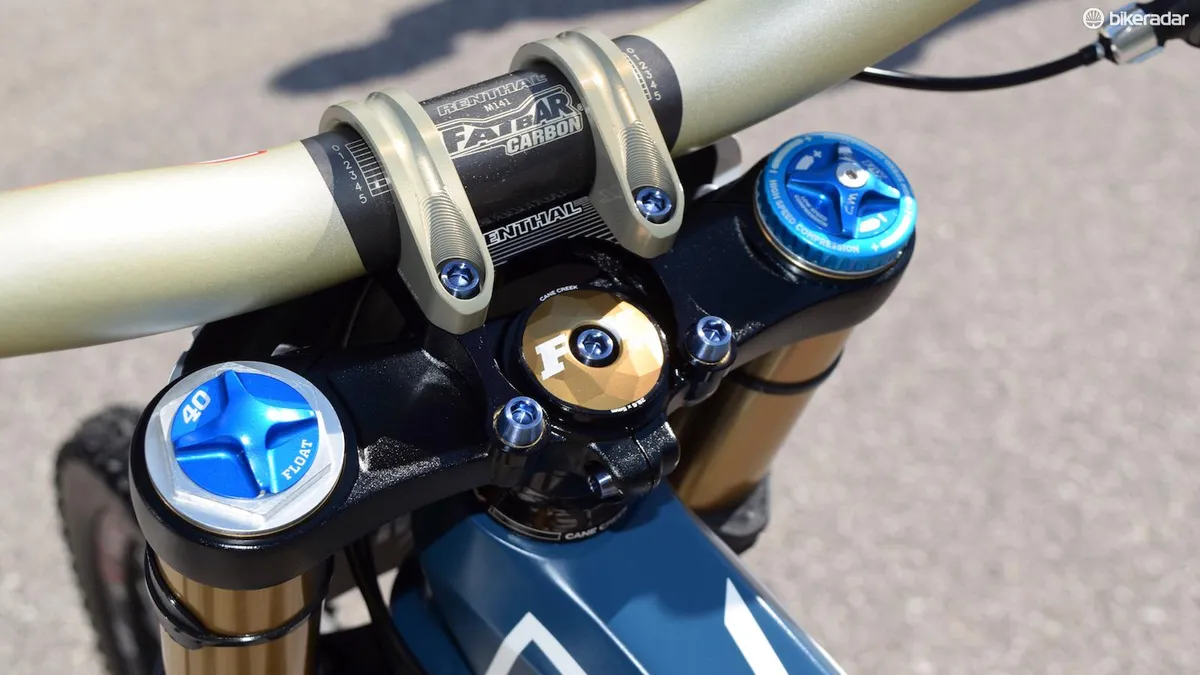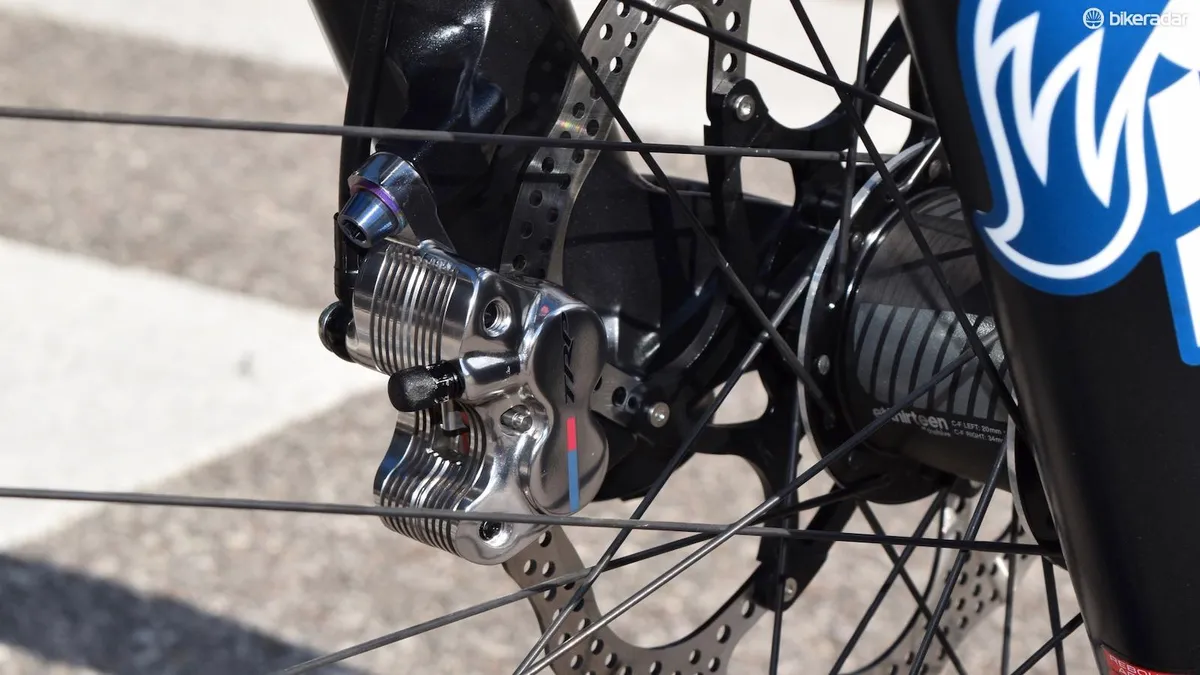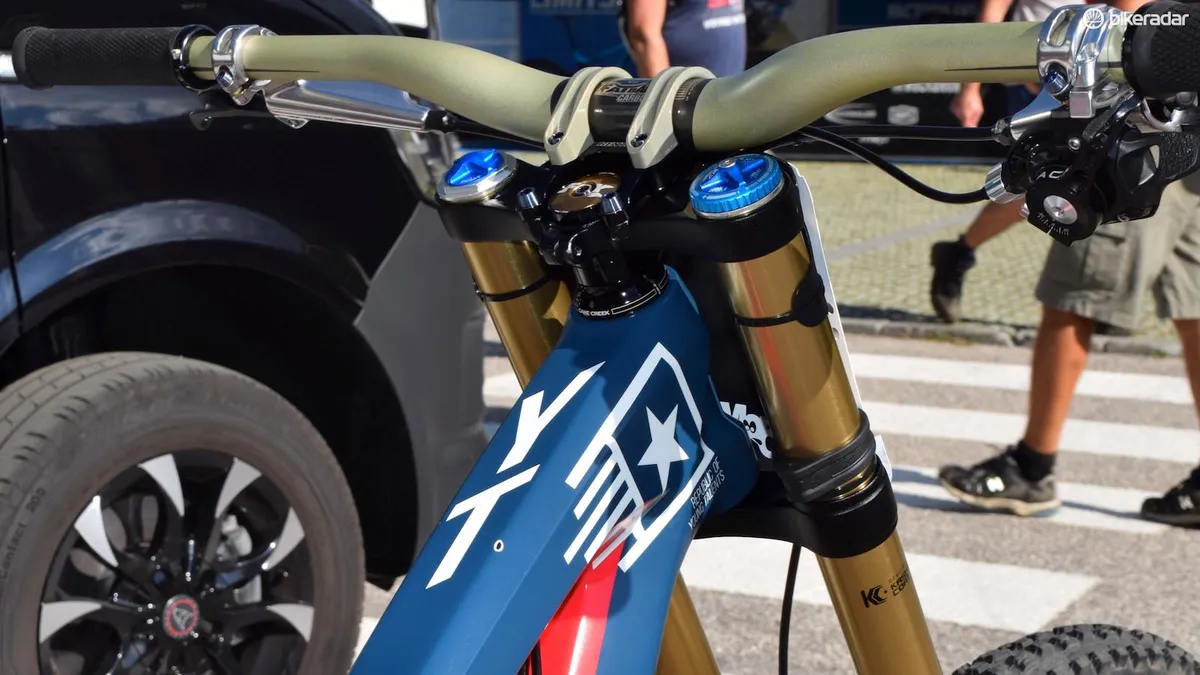Things didn’t quite go to plan for Aaron Gwin at the 2016 World Championships in Val Di Sole, when a slight deviation from his planned route down the trail resulted in his rear tyre being ripped from the rim, thrusting Danny Hart to his second World Championship win.
- Danny Hart’s World Championship winning Mondraker Summum
- Rachel Atherton’s Trek Session World Championship bike
That’s the nature of racing though, and it’s certainly not a reflection on Gwin’s YT Tues, a bike that garnered more attention than most at the race.
Despite much media interest, YT were relatively tight-lipped about Gwin’s bike, with a couple of areas off-limits to prying camera zooms and certainly a few bits that the mechanics didn’t want to discuss. Regardless, we managed to sneak a bit of time with Gwin’s mechanic and got the low-down on what he was willing to reveal.
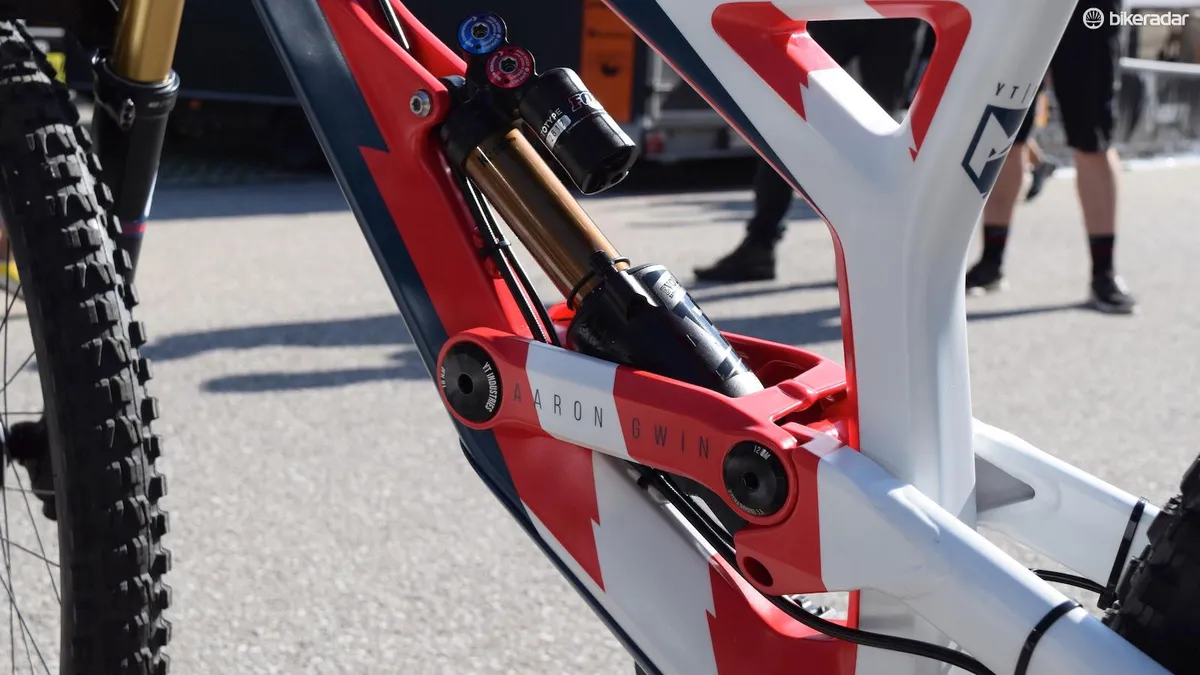
The team will spend two to three hours a day on the bike, checking and re-checking components and set-up between runs. Thankfully for them the weekend remained dry, so there was far less cleaning, and less wear, than would be expected on a wet weekend.
There seemed to be a pretty even split between teams who’d changed set-up for this race (and Vallnord the weekend before) and those who chose to keep a consistent set-up through the World Cup season. YT are in the former camp, with a few tweaks to the bike to set it up for the steep track that featured deep dusty holes between the rocks and roots.
The team told us that from last year to this the severity of the track has increased substantially, with much bigger, deeper holes in the course, meaning set-up wasn’t a simple cut and paste from last year.

The biggest changes are to the suspension, with the suspension being set up softer and slower than the previous weekend — this is different to some teams who set up the bike stiffer for the weekend. Having it softer copes better with the steepness of the track, and the slower suspension means there’s less bucking from high-speed hits — Gwin’s mechanic wanted to maintain a balanced feel between front and rear suspension.
Gwin also had his bar height adjusted for Val Di Sole, the only time it was done this year. While some use stem spacers, YT raised the crown on the fork stanchion for the extra 5mm of bar height. Sticking with the cockpit, Gwin used a custom 790mm Renthal bar on his Tues, rolled back a little more than most might. Keeping the whole bike locked together were titanium bolts, which shave a bit of weight and, frankly, look great too.

TRP aren’t the biggest name when it comes to braking, but Gwin has his own signature model, the latest version of which he was racing. The lever has a fairly sized reservoir and comes with reach adjustable, textured levers to get feel just right — Gwin runs the bite point pretty early in its stroke. The calipers are heavily machined to save weight and improve cooling, while the pistons are ceramic for improved performance when hot.
One of his main sponsors is e*thirteen, and the company provided much of the kit on the bike. The LG1r Carbon cranks help keep weight for the complete bike down to around 35lb. They’re decked out in a stars and stripes themed pair of HT X2 pedals.
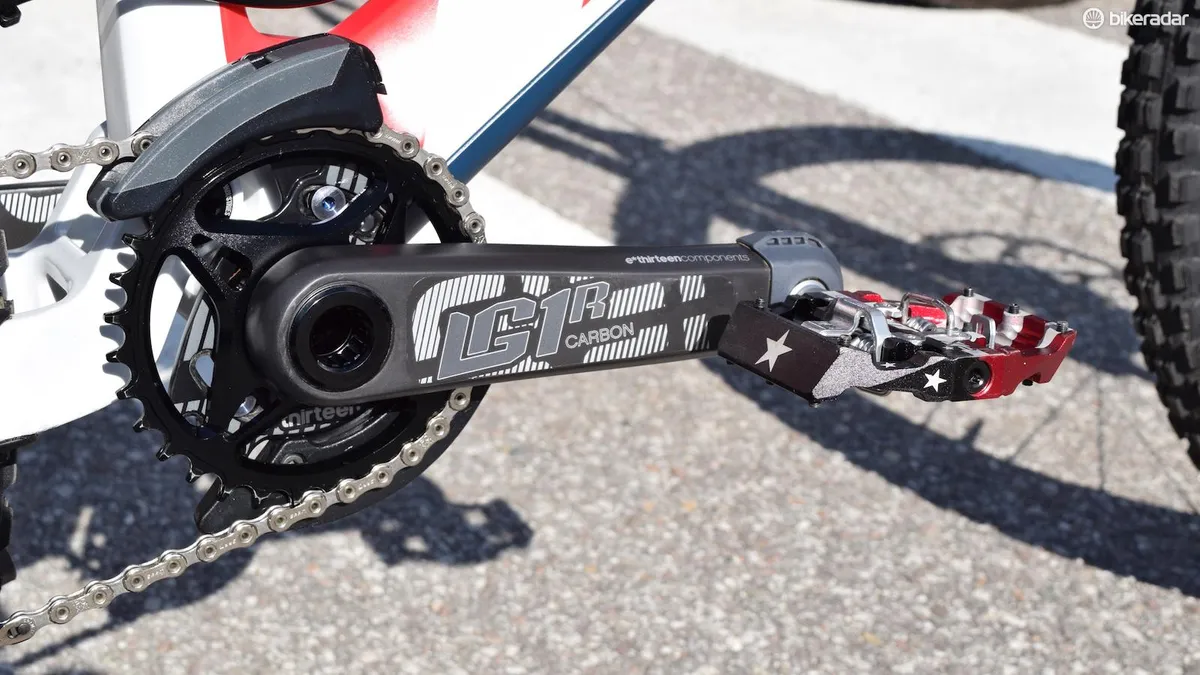
At the back there's an e*thirteen 9-21t cassette, run with a 36t ring, which gave Gwin a high 36:9 top gear, higher than most can achieve with a regular SRAM or Shimano cassette. Gwin’s mechanics added a little bit of grip tape to the custom CNC’d alloy shifter levers for added accuracy when shifting on the limit.
Wheels wise Gwin stuck to e*thirteen with its LG1-R model, which feature wide flanges and carbon rims. The wide flanges shorten the spokes and improve spoke angle for extra strength and stiffness, complementing the carbon rims. Having carbon rims lessens weight where it matters, not only improving acceleration and deceleration, but also reducing un-sprung mass, which marginally improves the performance of the suspension.
